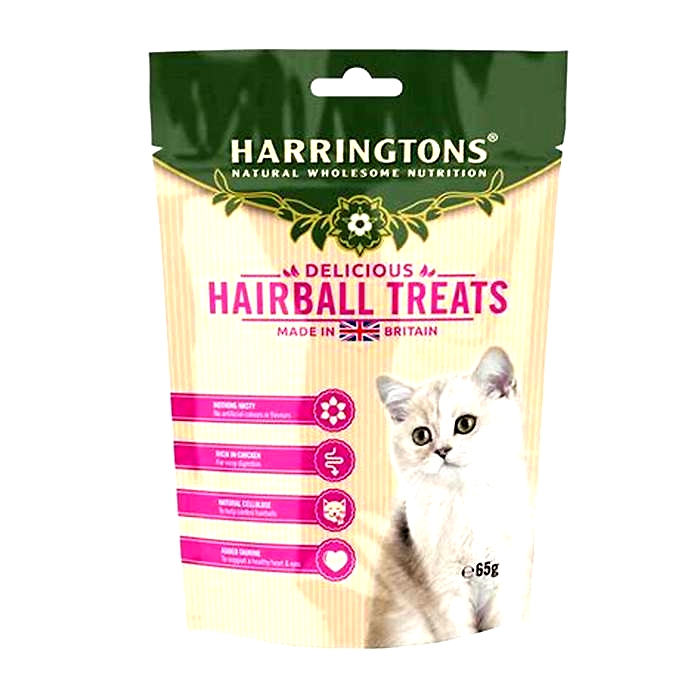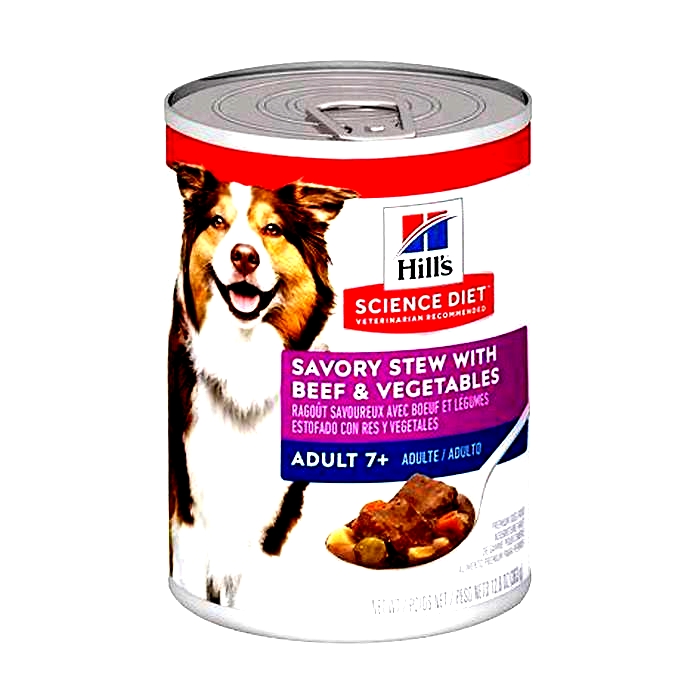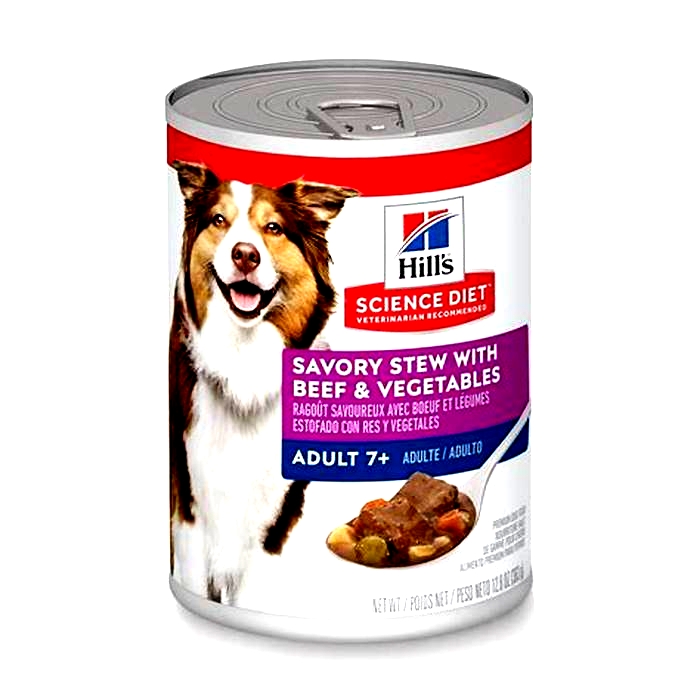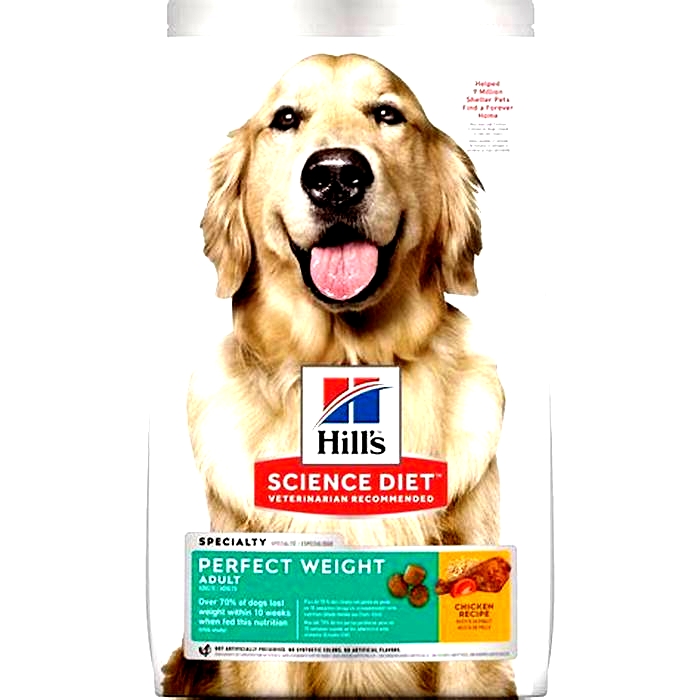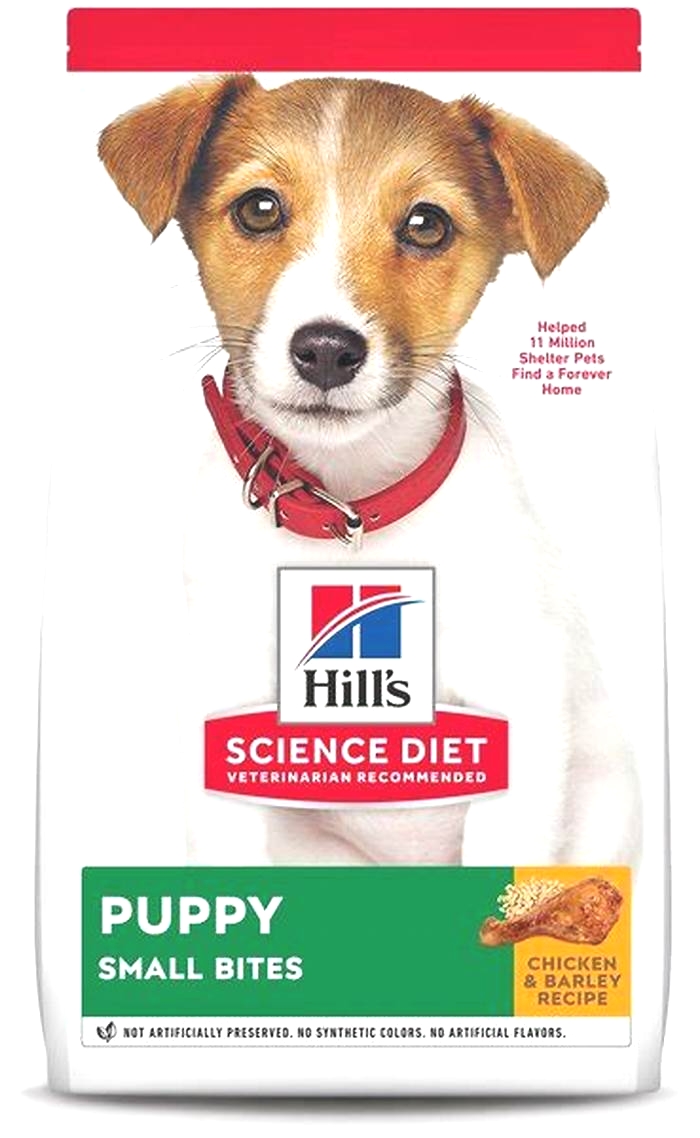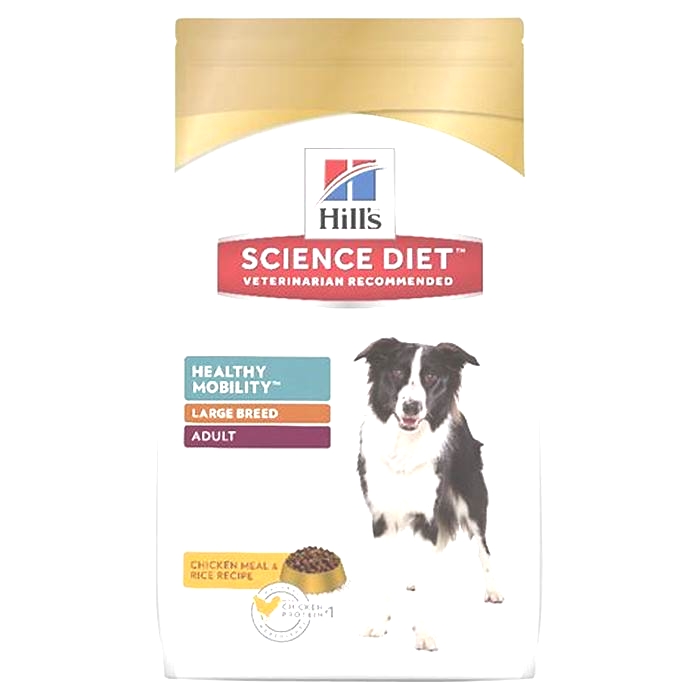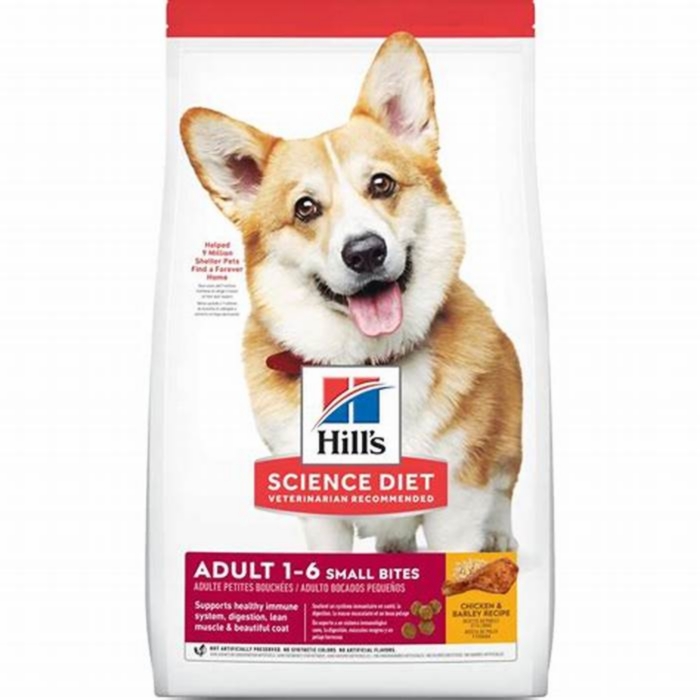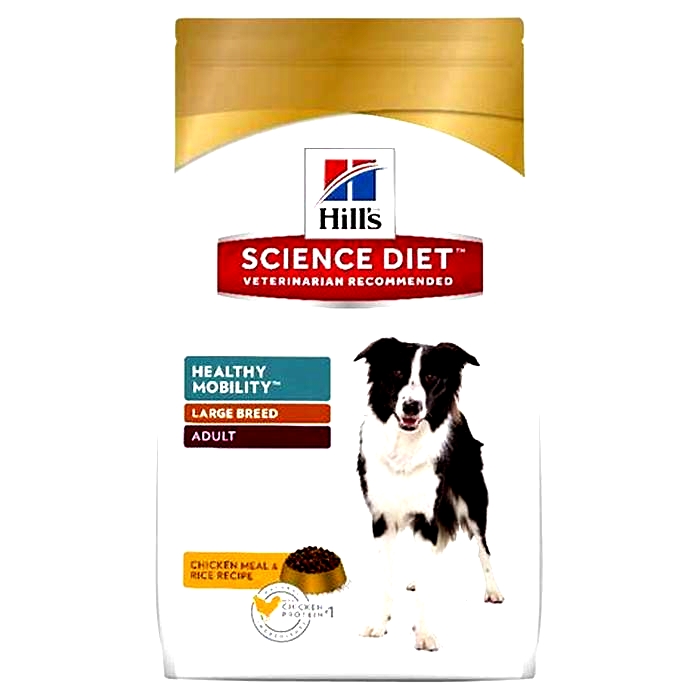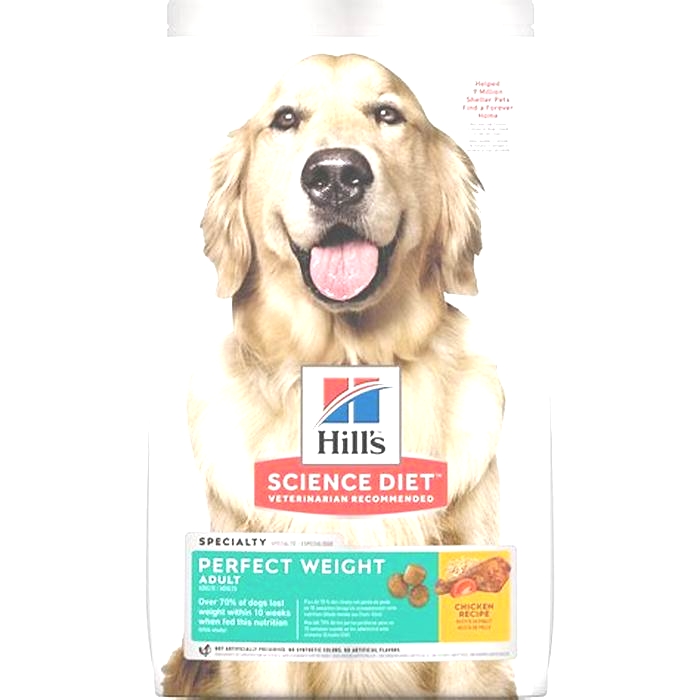Hill s Science Diet Dog Food Keeping Your Pet Healthy Inside and Out
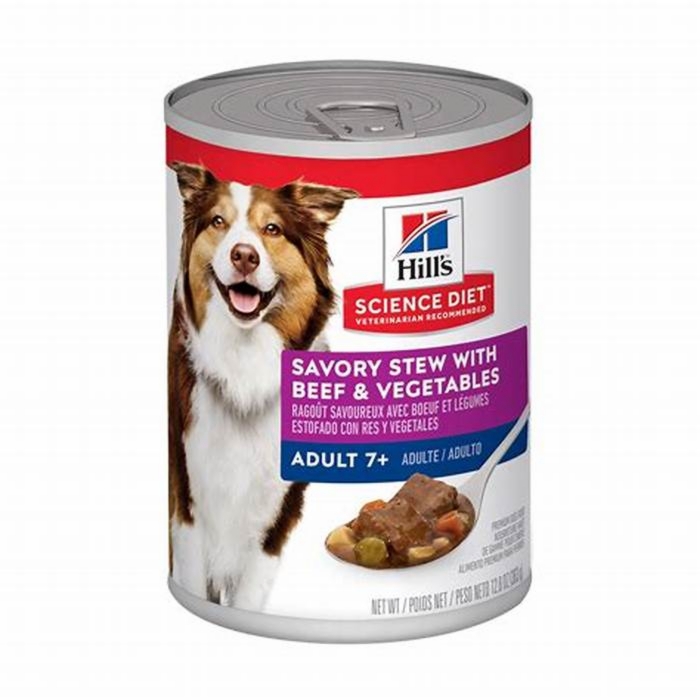
Hill's Science Diet Adult Healthy Mobility Large Breed dog food
INGREDIENTS:Chicken Meal, Brewers Rice, Whole Grain Sorghum, Brown Rice, Whole Grain Wheat, Cracked Pearled Barley, Soybean Meal, Dried Beet Pulp, Chicken Fat, Chicken Liver Flavor, Soybean Oil, Corn Gluten Meal, Fish Oil, Flaxseed, Lactic Acid, Pork Liver Flavor, Potassium Chloride, Choline Chloride, DL-Methionine, Iodized Salt, Calcium Carbonate, vitamins (Vitamin E Supplement, L-Ascorbyl-2-Polyphosphate (source of Vitamin C), Niacin Supplement, Thiamine Mononitrate, Vitamin A Supplement, Calcium Pantothenate, Riboflavin Supplement, Biotin, Vitamin B12 Supplement, Pyridoxine Hydrochloride, Folic Acid, Vitamin D3 Supplement), minerals (Ferrous Sulfate, Zinc Oxide, Copper Sulfate, Manganous Oxide, Calcium Iodate, Sodium Selenite), Taurine, L-Lysine, Oat Fiber, Mixed Tocopherols for freshness, Natural Flavors, L-Carnitine, Beta-Carotene, Apples, Broccoli, Carrots, Cranberries, Green Peas.
Grooming Suggestions for Keeping Your Dog's Coat Healthy
An important part of maintaining a healthy dog is ensuring he or she has a healthy skin and coat. The amount of care your dog needs will vary, but all dogs need a good grooming regimen.
Grooming options to be considered:
- Check with private pet groomers, your veterinarian or even your local pet specialty store.
- Reputable groomers are well trained and familiar with the needs of your particular breed of dog. Theyll also clean your dogs ears and cut his nails.
- You may choose to groom your dog, or do part of the work yourself with the occasional trip to the groomer. This is a wonderful opportunity to spend time with your dog. Most dogs love the attention they get with a good brushing.
Healthy coat's appearance: A healthy coat will be soft and relatively smooth even on short or wired hair breeds. The coat should be shiny but not greasy, and it should not have a strong odor.
Unhealthy coat's appearance: A dog with an unhealthy coat will have dry and brittle hair with lots of loose hair in the coat. The coat itself may also be greasy or have a dusty appearance and include bald spots and an unpleasant oily smell.
Brushing is the most important part of dog grooming:
- Long-haired breeds such as Irish setters, border collies, shelties and Pomeranians need to be brushed twice a week.
- Dogs prone to shedding, or with thick undercoats, should be brushed once a week.
- Even short-haired breeds benefit from regular grooming to remove loose hair.
Brushing requires the appropriate tools. There are as many different types of brushes as there are types of coats on a dog. Ideally, you need two brushes: one with widely spaced teeth for the coat's outer layer and a finer-spaced brush for combing and brushing around the face. You can also ask your veterinarian or groomer for a recommendation.
Dogs are content without a bath. "Doggy smell" is mostly caused by a buildup of bacteria and oil on a dogs coat. Bathing will eliminate this build up.
Be careful with "over-bathing." This can lead to dry skin and irritation. Unless your dog is particularly dirty, dont bathe more than once a month. Also, dont use shampoo designed for people. Baby shampoo is safe and wont irritate the eyes, but the detergents are so mild that they wont remove heavy grime or grease. Ideally, purchase cleaning products formulated for your dog. Your veterinarian or local pet specialty store sells them.
Nutrition is foremost. One of the most important aspects of maintaining a healthy coat is nutrition. Hair is mostly made of protein. The better your dogs food, the better your dogs coat. Foods that are rich in essential fatty acids are particularly good for your dogs coat. If your dog is showing signs of trouble with his coat or skin, his food may be the reason. Hill's has a complete line of products for maintaining healthy skin and coat. Ask your veterinarian about Hills Science Diet and Prescription Diet pet foods.
Also consider reading:
Hill's Science Diet Adult Healthy Mobility dog food
INGREDIENTS:Chicken Meal, Brewers Rice, Whole Grain Sorghum, Brown Rice, Whole Grain Wheat, Cracked Pearled Barley, Soybean Meal, Dried Beet Pulp, Chicken Fat, Chicken Liver Flavor, Soybean Oil, Corn Gluten Meal, Fish Oil, Flaxseed, Lactic Acid, Pork Liver Flavor, Potassium Chloride, Choline Chloride, DL-Methionine, Iodized Salt, Calcium Carbonate, vitamins (Vitamin E Supplement, L-Ascorbyl-2-Polyphosphate (source of Vitamin C), Niacin Supplement, Thiamine Mononitrate, Vitamin A Supplement, Calcium Pantothenate, Riboflavin Supplement, Biotin, Vitamin B12 Supplement, Pyridoxine Hydrochloride, Folic Acid, Vitamin D3 Supplement), minerals (Ferrous Sulfate, Zinc Oxide, Copper Sulfate, Manganous Oxide, Calcium Iodate, Sodium Selenite), Taurine, L-Lysine, Oat Fiber, Mixed Tocopherols for freshness, Natural Flavors, L-Carnitine, Beta-Carotene, Apples, Broccoli, Carrots, Cranberries, Green Peas.
Tips for Keeping Your Dog's Teeth Clean & Healthy
Believe it or not, taking care of your dogs teeth is as important as taking care of your own. According to the American Animal Hospital Association, nearly two-thirds of dog owners do not provide the veterinarian-recommended guidelines for dog dental care. Periodontal disease is the most common clinical condition in adult dogs, and most dogs have some form of the disease by the time they turn 3 years old.
Just like us, dogs can experience plaque build-up if we dont take proper care of their teeth. This turns into tartar, which accumulates around the gum lines and causes irritation, and can eventually lead to gum inflammation (gingivitis), bone/soft tissue loss, and gum disease. Bacterial infection can also lead to tooth loss and complications of the heart, lung, or kidney as your dog ages. The good news is that, with regular dental care, these diseases are preventable.
How to Brush a Dogs Teeth at Home
The gold standard for dog oral care at home is brushing. Here are some tips for getting started:
- Get your dog used to the idea of having his teeth brushed. Keep the sessions short and positive. Dip your finger in beef bouillon and massage his lips in a circular motion for 30 to 60 seconds once or twice a day for a few weeks, and then move on to the teeth and gums.
- Wrap your finger in gauze or place a toothbrush at a 45-degree angle to the teeth and clean in small, circular motions, lifting your dogs lip if necessary. Because the side of the tooth that touches the cheek contains the most tartar, concentrate there.
- When youre almost finished, brush vertically toward the inside of the mouth to clear any plaque youve dislodged.
- Use a brush designed especially for dogs; its smaller than a human toothbrush and has softer bristles. Toothbrushes that you can wear over your finger are also available.
- Use toothpaste designed for dogs; using your own toothpaste can cause distress and upset your dogs stomach.
Develop a Regular Cleaning Routine
Consistency is key. Brush your dogs teeth at least 2 to 3 times a week. Once a day brushing is ideal. The better you are at keeping a regular routine, the easier it will be on your dog and the more likely he will start to respond positively to you brushing his teeth. It will also help you remember to keep his teeth clean and healthy as you start to commit to a regular cycle.
Check for Tell-tale Signs
Between vet visits, be sure to check your dog for these important warning signs.
- Bad breath: Dogs can have bad breath for a variety of health reasons, including dental disease
- Swollen and/or bleeding gums
- Difficulty eating
- Yellow and brown tartar deposits on the gum line
- Excessive drooling
If you notice any of these warning signs in your dog, make an appointment with your vet. Your vet may recommend a professional dental cleaning, which begins with blood work to determine if your dog is healthy enough to undergo anesthesia. If he is, your vet will administer anesthesia to him and begin a comprehensive cleaning. This includes:
- A complete oral exam and x-rays to identify problems under the gum line
- A full cleaning under the gum line to prevent periodontal disease
- Professional scaling to remove plaque and tartar build-up on the crown
- Polishing the teeth to prevent plaque and bacteria
Specifically formulated dental dog foods and treats can slow the formation of tartar and avoid the onset of dental disease. Science Diet Adult Oral Care dog food provides precisely balanced nutrition along with scrubbing teeth, freshening breath, and reducing plaque, tartar, and stain build up. Hill's Prescription Diet t/d Canine dog food is an option to consider for smaller dogs. It offers nutrition for your dogs teeth and is available in small bites.
Adult Healthy Mobility Large Breed Chicken Meal, Brown Rice & Barley Recipe Dog Food
INGREDIENTS:Chicken Meal, Brewers Rice, Whole Grain Sorghum, Brown Rice, Whole Grain Wheat, Cracked Pearled Barley, Soybean Meal, Dried Beet Pulp, Chicken Fat, Chicken Liver Flavor, Soybean Oil, Corn Gluten Meal, Fish Oil, Flaxseed, Lactic Acid, Pork Liver Flavor, Potassium Chloride, Choline Chloride, DL-Methionine, Iodized Salt, Calcium Carbonate, vitamins (Vitamin E Supplement, L-Ascorbyl-2-Polyphosphate (source of Vitamin C), Niacin Supplement, Thiamine Mononitrate, Vitamin A Supplement, Calcium Pantothenate, Riboflavin Supplement, Biotin, Vitamin B12 Supplement, Pyridoxine Hydrochloride, Folic Acid, Vitamin D3 Supplement), minerals (Ferrous Sulfate, Zinc Oxide, Copper Sulfate, Manganous Oxide, Calcium Iodate, Sodium Selenite), Taurine, L-Lysine, Oat Fiber, Mixed Tocopherols for freshness, Natural Flavors, L-Carnitine, Beta-Carotene, Apples, Broccoli, Carrots, Cranberries, Green Peas.

